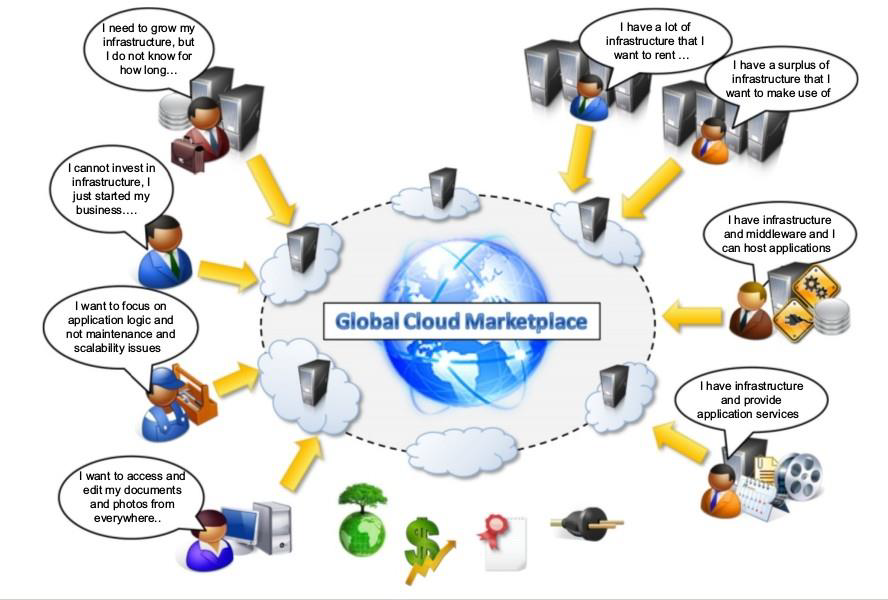vision of cloud computing
Cloud Computing and Its ApplicationsExplanation
1780
0
Cloud computing allows anyone with a credit card to provision virtual hardware, runtime environments, and services. These are used for as long as needed, with no up-front commitments required.
The entire stack of a computing system is transformed into a collection of utilities, which can be provisioned and composed together to deploy systems in hours rather than days and with virtually no maintenance costs.
The long-term vision of cloud computing is that IT services are traded as utilities in an open market, without technological and legal barriers. In this cloud marketplace, cloud service providers and consumers, trading cloud services as utilities, play a central role.
Many of the technological elements contributing to this vision already exist. Different stake-holders leverage clouds for a variety of services. The need for ubiquitous storage and compute power on demand is the most common reason to consider cloud computing. A scalable runtime for applications is an attractive option for application and system developers that do not have infrastructure or cannot afford any further expansion of existing infrastructure.
This approach provides opportunities for optimizing datacenter facilities and fully utilizing their capabilities to serve multiple users. This consolidation model will reduce the waste of energy and carbon emissions, thus contributing to a greener IT on one end and increasing revenue on the other end.
The entire stack of a computing system is transformed into a collection of utilities, which can be provisioned and composed together to deploy systems in hours rather than days and with virtually no maintenance costs.
The long-term vision of cloud computing is that IT services are traded as utilities in an open market, without technological and legal barriers. In this cloud marketplace, cloud service providers and consumers, trading cloud services as utilities, play a central role.
Many of the technological elements contributing to this vision already exist. Different stake-holders leverage clouds for a variety of services. The need for ubiquitous storage and compute power on demand is the most common reason to consider cloud computing. A scalable runtime for applications is an attractive option for application and system developers that do not have infrastructure or cannot afford any further expansion of existing infrastructure.
This approach provides opportunities for optimizing datacenter facilities and fully utilizing their capabilities to serve multiple users. This consolidation model will reduce the waste of energy and carbon emissions, thus contributing to a greener IT on one end and increasing revenue on the other end.

